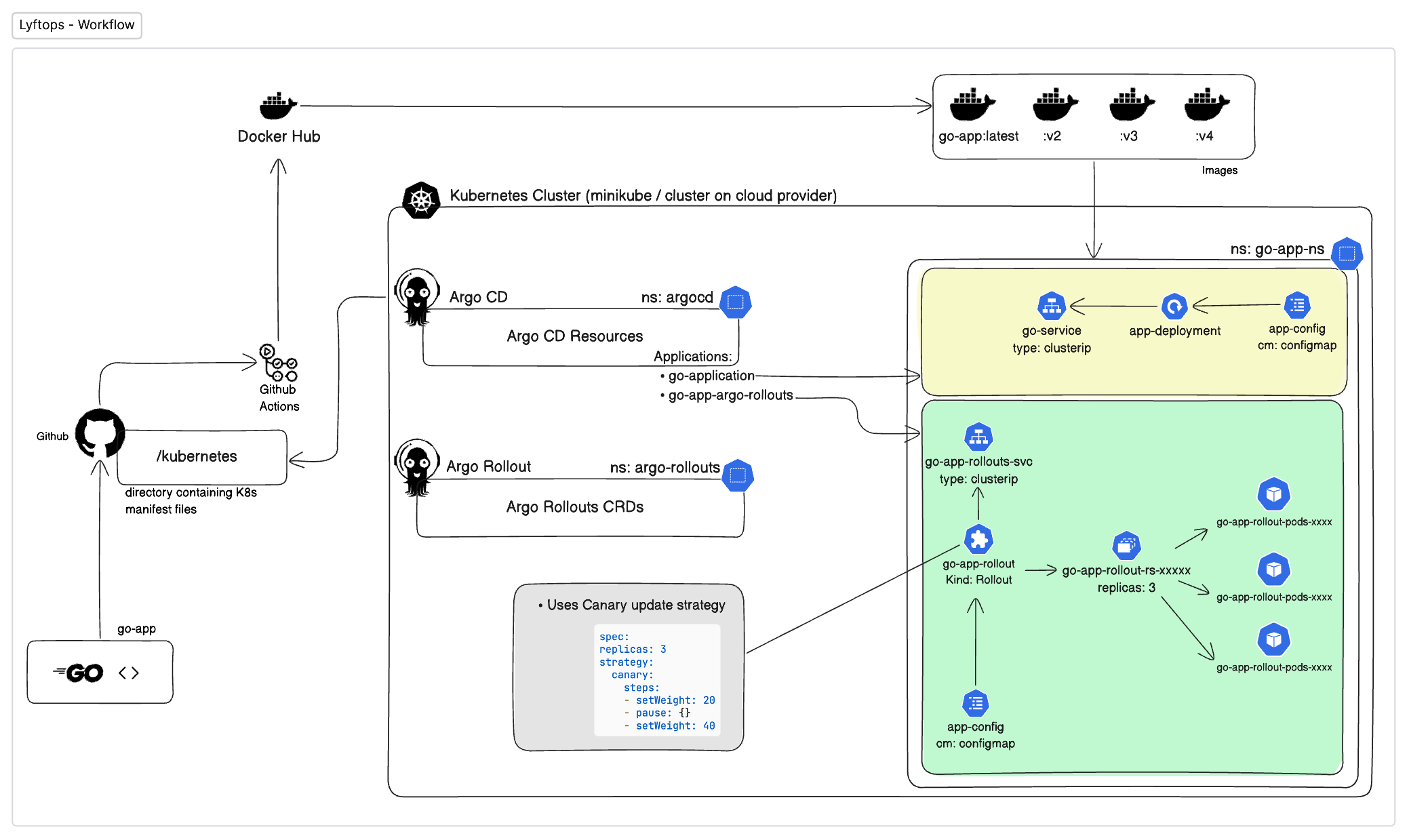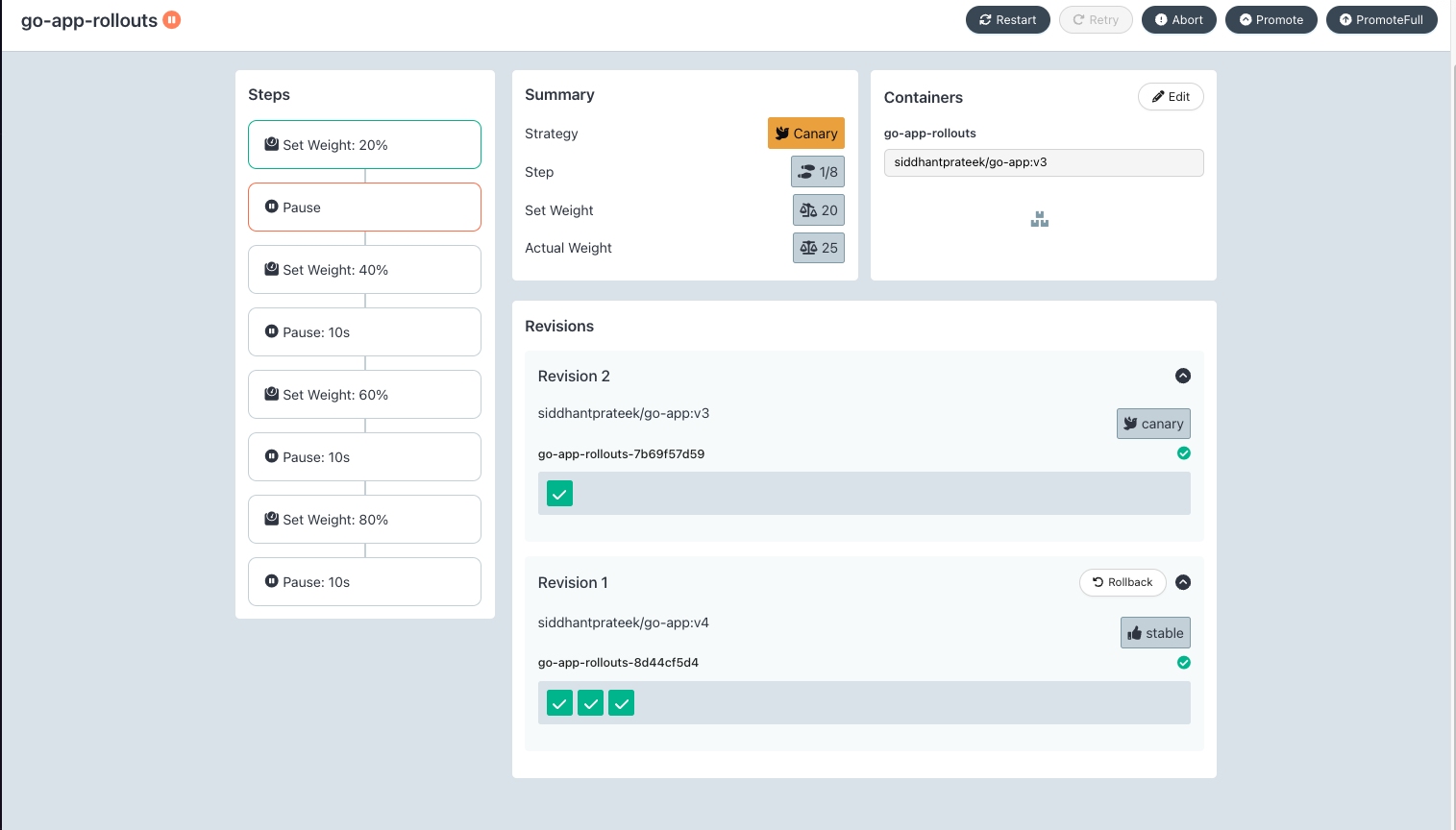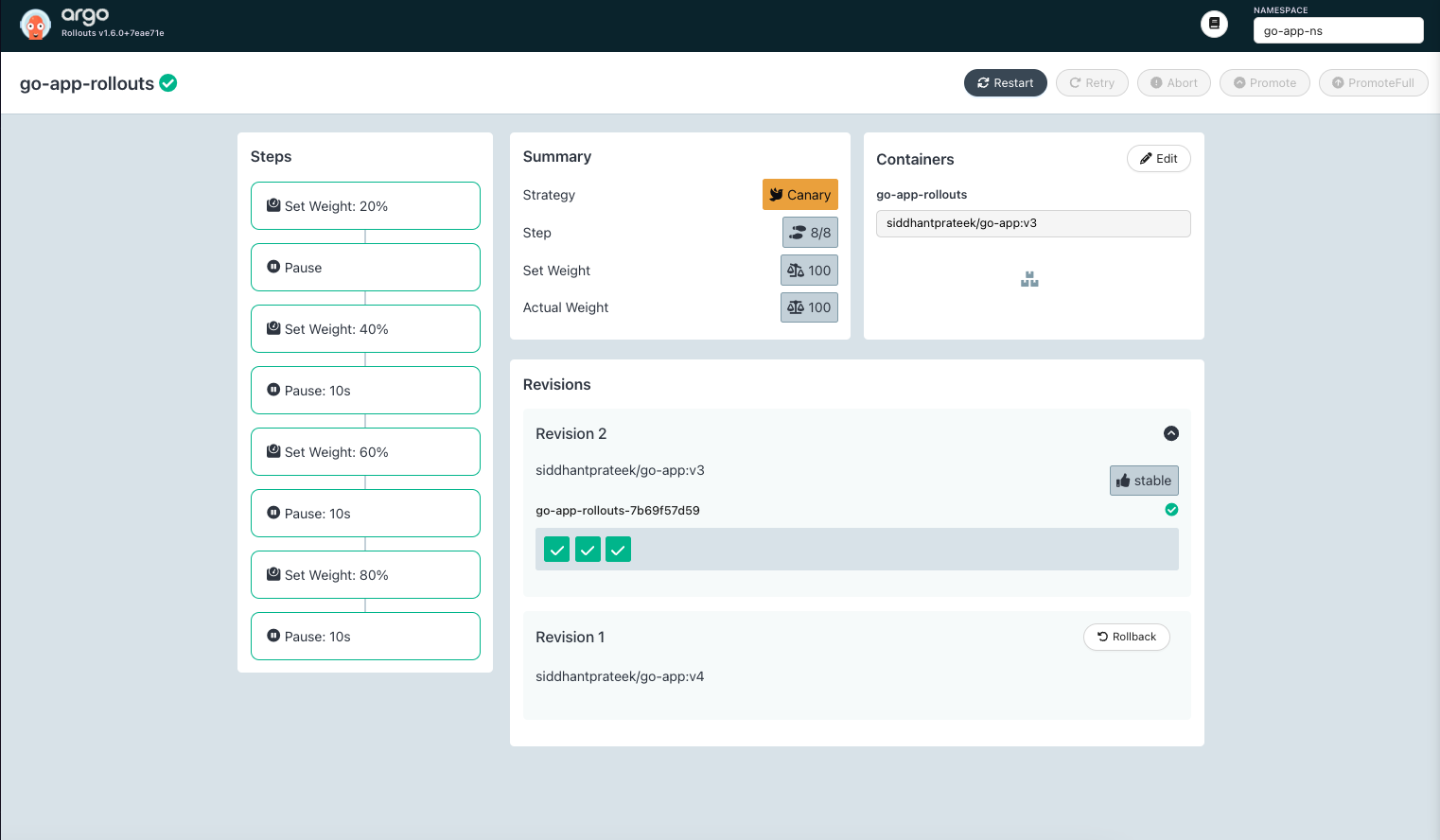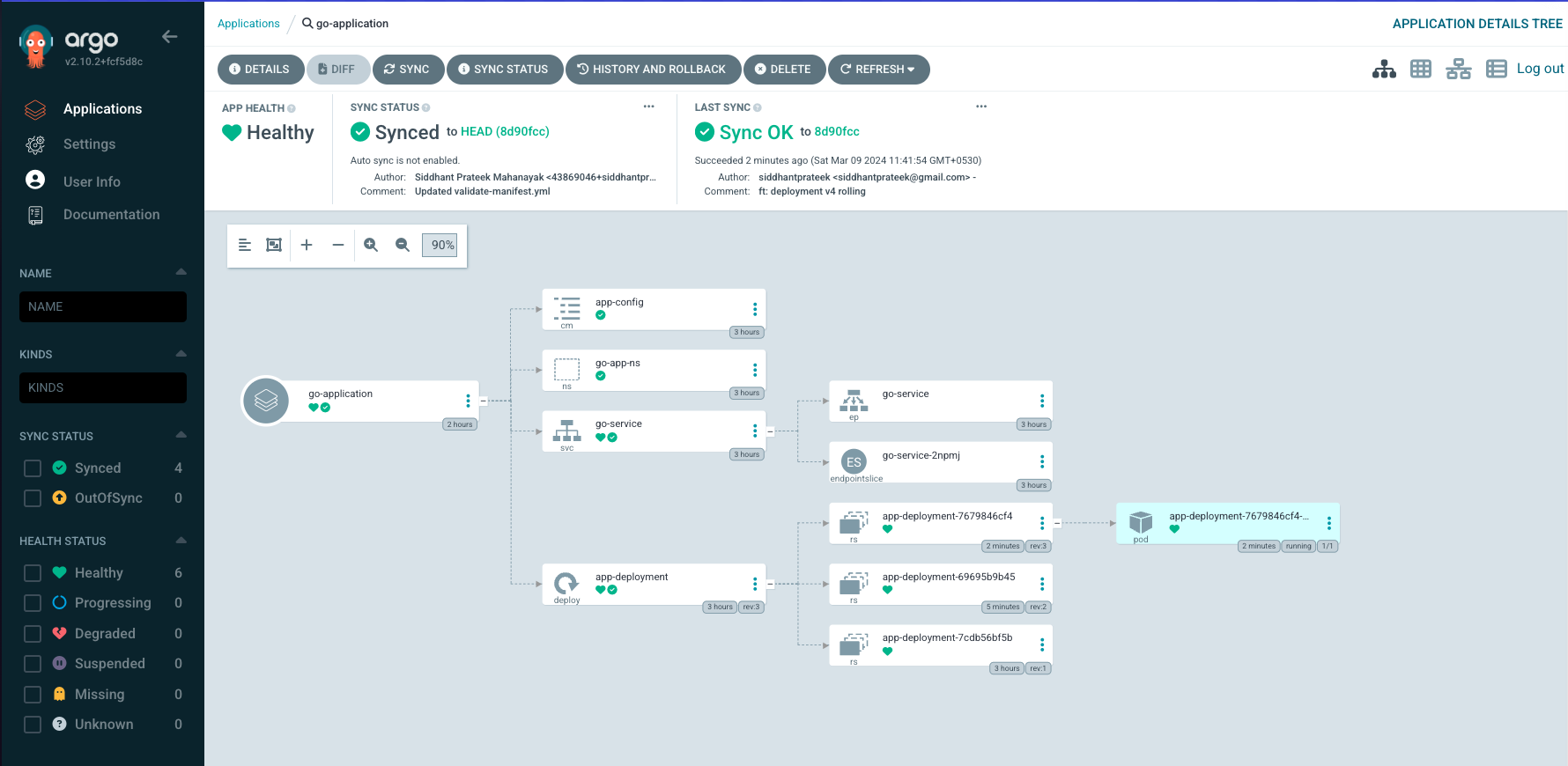The aim of this project is to understand the GitOps best practices, utilizing Argo CD for continuous deployment and Argo Rollouts for advanced deployment strategies within a Kubernetes environment. I'm responsible for setting up a GitOps pipeline that automates the deployment and management of a simple web application.
Kubernetes- Container Orchestration ToolArgoCDArgo RolloutGoLabstack - Echo- Go web framework used for building the API server.Github Actionsfor CI/CD pipelineDocker- ContainerTerraform- Infrastructure provisioning tool
Few things to note:
/kubernetescontains the kubernetes manifest files for the Go application. It contains (Deployment, Service & ConfigMap)/kubernetes/argo-rolloutcontains the Rollout for Go application. Plus Instruction to step Argo Rollout in Kubernetes cluster. There are 4 versions of docker image on docker hub.go-app:latest,go-app:v2,go-app:v3,go-app:v4. In ArgoCD, there are 2 application created,go-application(Yellow) andgo-app-argo-rollouts(Green)
Docker Imageis located at - https://hub.docker.com/r/siddhantprateek/go-app
- Currently, the application is written in Go which is in
/appdirectory. - The Go application is containerized and pushed to Docker Hub to
siddhantprateek/go-app. - So everytime, I push any changes to Github, a CI pipeline by Github Actions will be triggered which builds the docker image of the app and pushes it to Docker Hub.
- Within the Kubernetes cluster, there are 3 namespaces:
go-app-ns: contains all the resources related to Go app.argocd: contains all the resources related to Argo CD.argo-rollout: contains Argo Rollout CRDs.
- So in kubernetes cluster, ArgoCD creates a pipleline with Git repository, where any changes that occurred to manifest files in
/kubernetesdirectory triggers the workflow. - Argo CD continuously monitors the
/kubernetesdirectory for changes. - When changes are detected, Argo CD suggests that the application's current state is out of sync.
- Review the suggested changes in the Argo CD dashboard.
- Decide whether to proceed with syncing the changes, initiating a rollout of the updated application version, or rollback to a previous version.
- Argo CD facilitates the management of rollouts, ensuring seamless deployment of the updated application version.
- It provides visibility into the deployment process and allows for monitoring of the application's health and performance.
- Make sure that Kubernetes environment in running. You can use Minikube or Kind or any kubernetes offering by any cloud provider.
- Spin your kubernetes cluster (local or cloud).
- If you want to Run Kubernetes on Linode you need an API Token.
$ tofu plan
var.linode_token
linode config token
Enter a value:
OpenTofu used the selected providers to generate the following execution plan. Resource actions are
indicated with the following symbols:
+ create
OpenTofu will perform the following actions:
# linode_lke_cluster.linode_kube will be created
+ resource "linode_lke_cluster" "linode_kube" {
+ api_endpoints = (known after apply)
+ dashboard_url = (known after apply)
+ id = (known after apply)
+ k8s_version = "1.28"
+ kubeconfig = (sensitive value)
+ label = "linode_kube"
+ region = "ap-south"
+ status = (known after apply)
+ tags = [
+ "prod",
]
+ pool {
+ count = 3
+ id = (known after apply)
+ nodes = (known after apply)
+ type = "g6-nanode-1"
+ autoscaler {
+ max = 5
+ min = 3
}
}
}
Plan: 1 to add, 0 to change, 0 to destroy.- To Spin up the Kubernetes Cluster on Linode LKE, run
tofu apply # Create or update infrastructure-
To Access your cluster via
kubectl, go through /scripts, need to provide kubeconfig.yaml configuration. -
After forming the infrastructure
$ linode-cli lke clusters-list
┌────────┬─────────────┬────────┬─────────────┬─────────────────────────────────┐
│ id │ label │ region │ k8s_version │ control_plane.high_availability │
├────────┼─────────────┼────────┼─────────────┼─────────────────────────────────┤
│ 161755 │ linode-kube │ in-maa │ 1.28 │ False │
└────────┴─────────────┴────────┴─────────────┴─────────────────────────────────┘- Setup Argo CD Resources
kubectl create namespace argocd
kubectl apply -n argocd -f https://raw.githubusercontent.com/argoproj/argo-cd/stable/manifests/install.yaml- Setup Argo Rollout
kubectl create namespace argo-rollouts
kubectl apply -n argo-rollouts -f https://github.com/argoproj/argo-rollouts/releases/latest/download/install.yaml- Setup Application Resources
kubectl apply -f ./kubernetes/
kubectl apply -f ./kubernetes/argo-rollout/- After all the things are setup you can play around with manifest file in
/kubernetesdirectory by changing the image labels, through CLI.
kubectl argo rollouts set image go-app-rollouts go-app-rollouts=siddhantprateek/go-app:<CHANGE_THE_LABEL> -n go-app-ns - After everything is done
tofu destroy # Destroy previously created infrastructure-
Through Argo Rollout performing canary deployment strategy. Argo Rollouts monitoring the deployment of the new version, ensuring the canary release successfully completes.
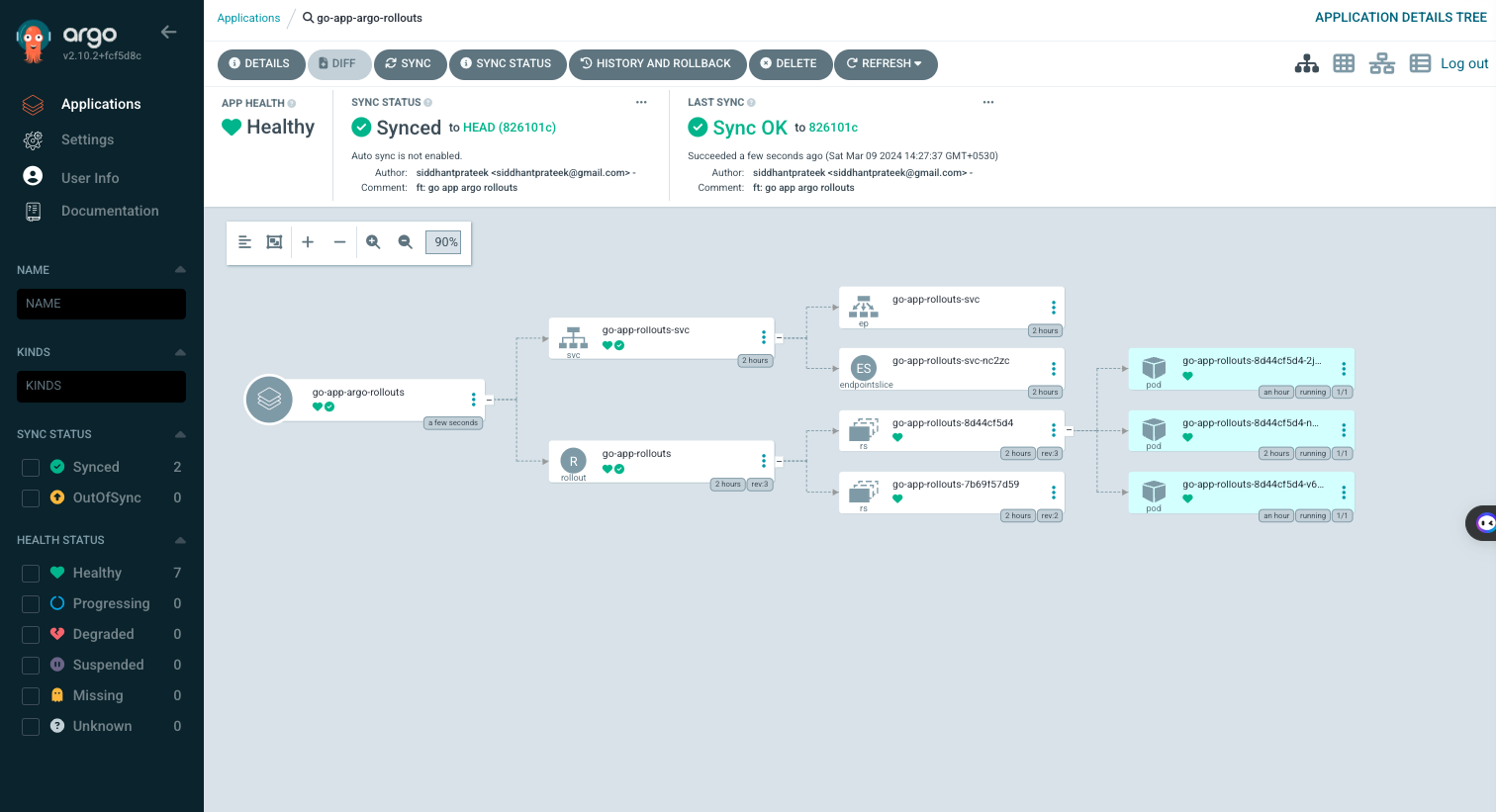
-
Canary Deployment view.
There have been relatively few issues encountered. If the task had been to use 'kubectl rollout', it could have been difficult, however ArgoCD made it easier as it allows rollout/rollback control. Plus features like Automate Synchronisation allow you to set alternative deployment strategies that are appropriate for the application.
